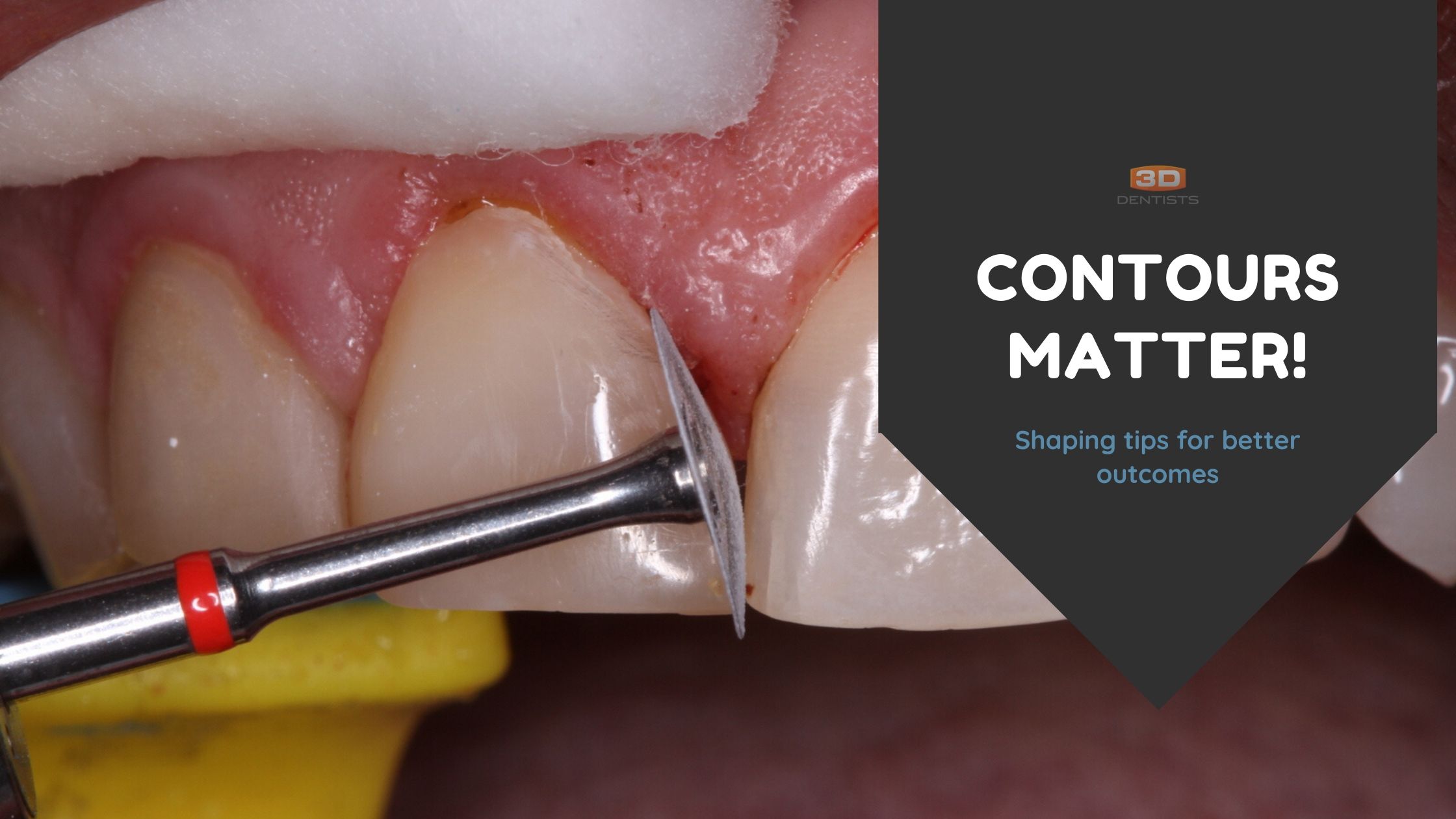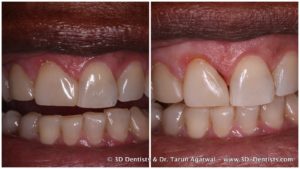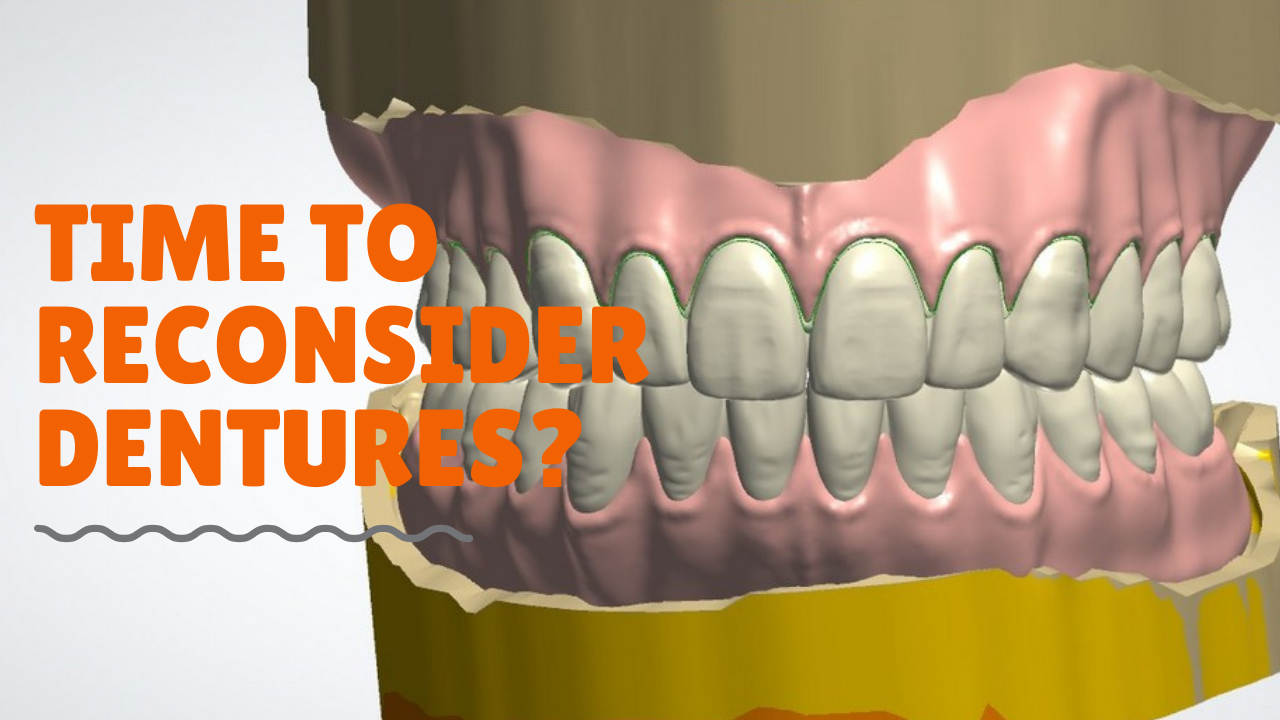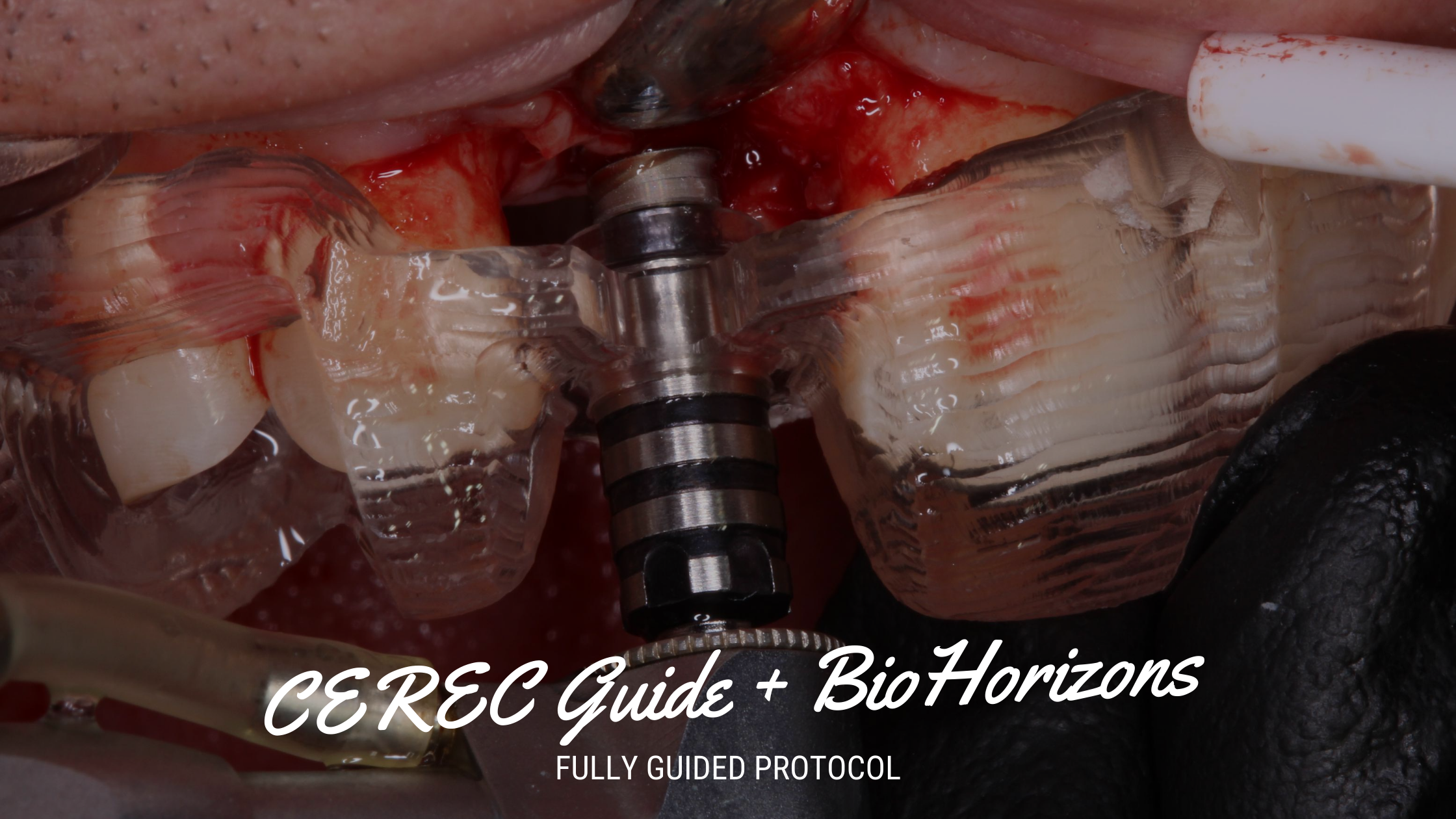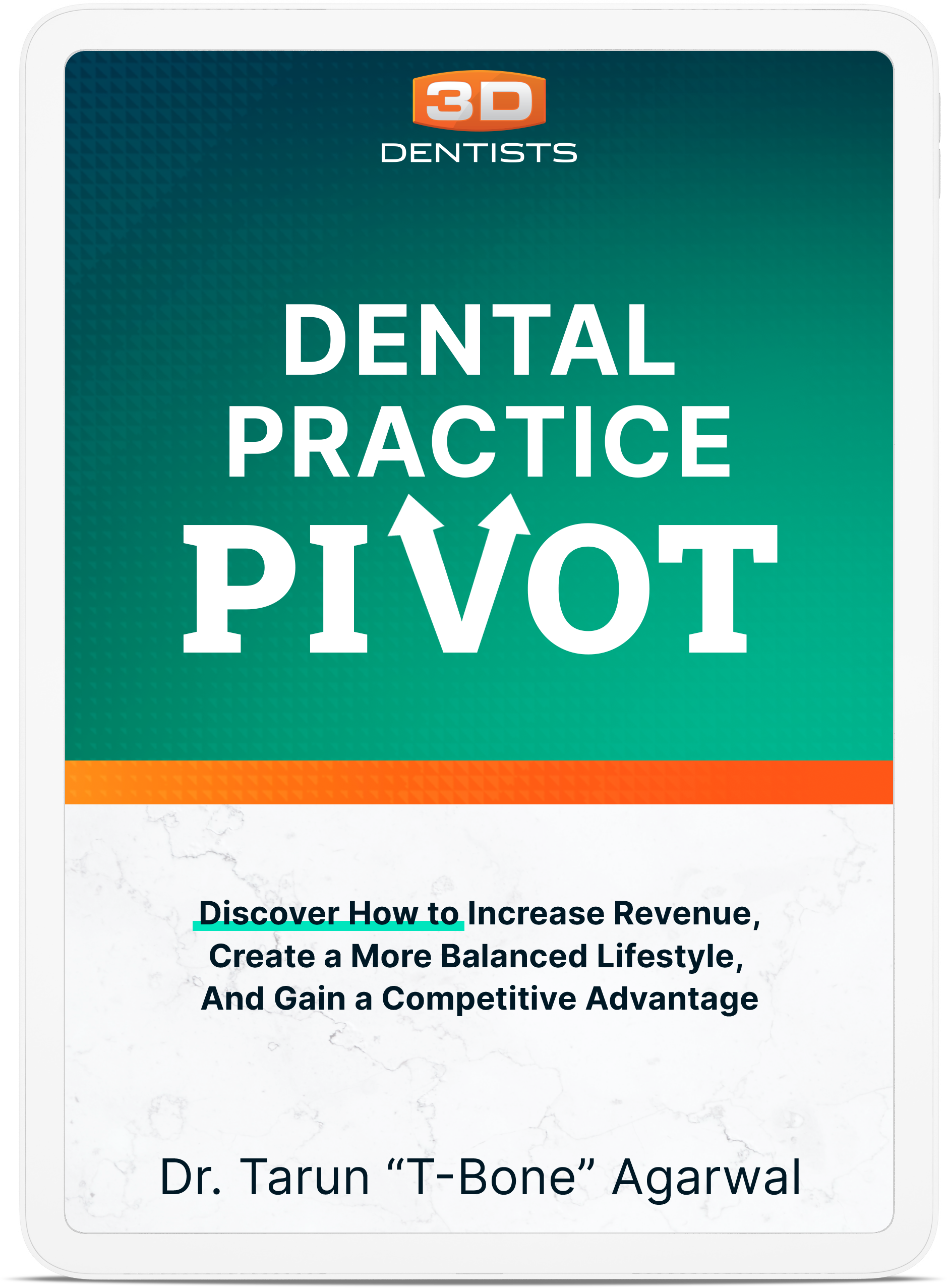As dentists we often get fixated on material selection and shade. But we are most often overlooking a more important aspect of quality restorative dentistry – contours and shape.
Contours can make or break the aesthetic perception of a case!
I would like to share with you a case that is far from perfect – before or after – but shows the difference understanding contours can make.
Regina recently came to our office unhappy with composite bonding done on tooth #8. She was specific about how the teeth didn’t look the same size. She also mentioned the color as well, but that wasn’t primary concern.
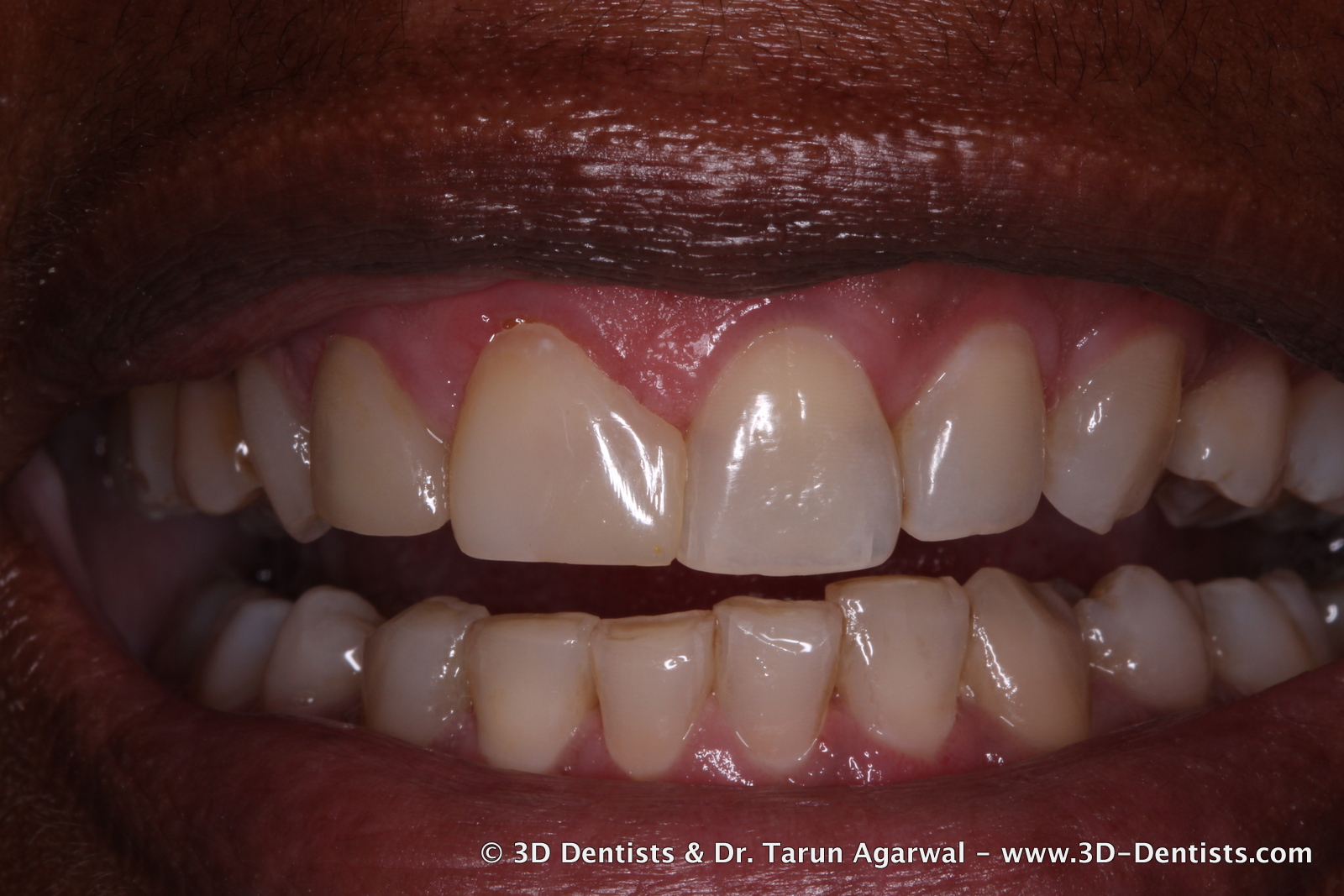
As you can clearly see the shape of #8 makes the restoration look wider and is also putting pressure on the papillae.
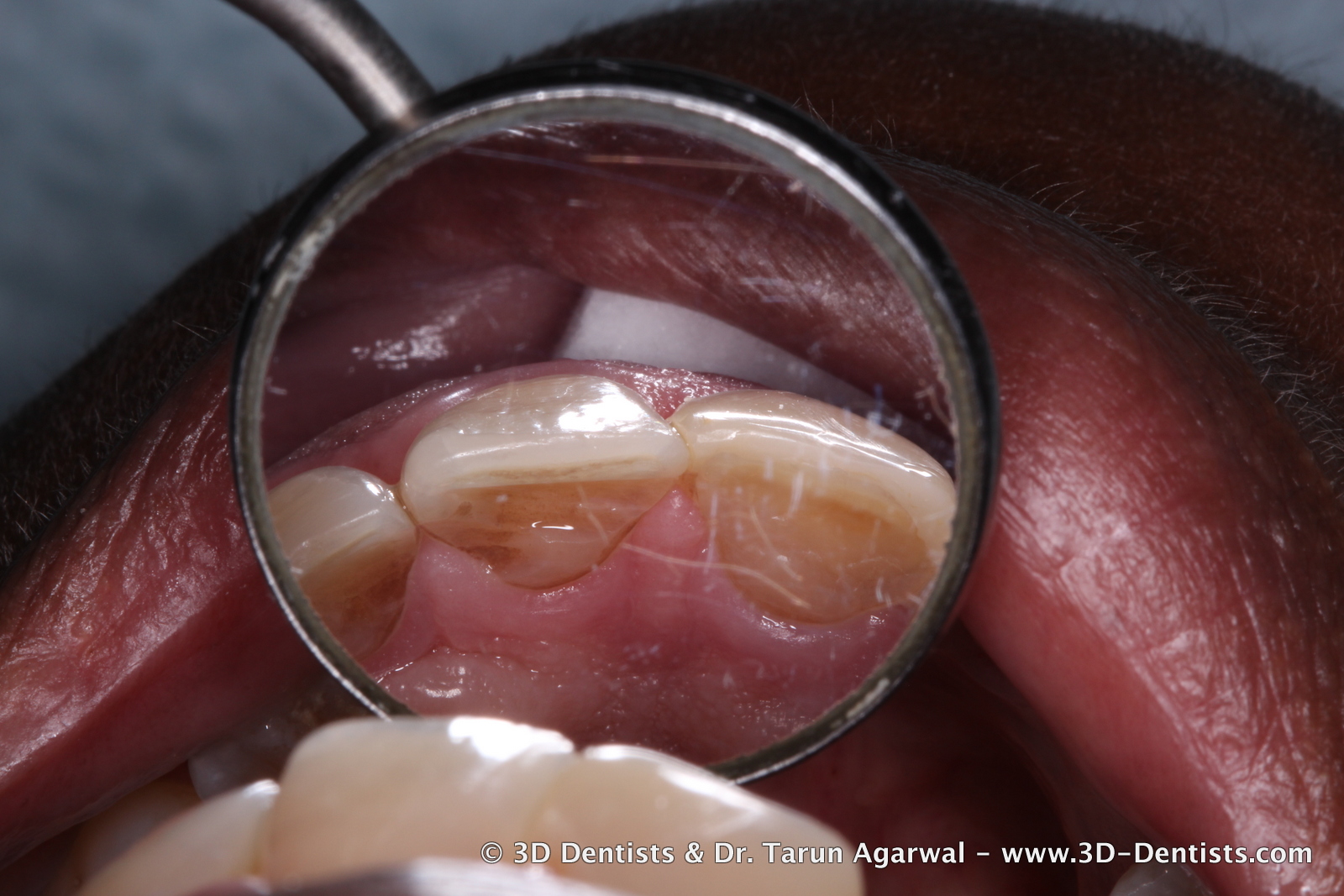
In looking at the facial shape in a mirror (i clearly need some new dental mirrors) you can see the mesial line angle is angled towards #9. This also makes #8 look much wider than #9.
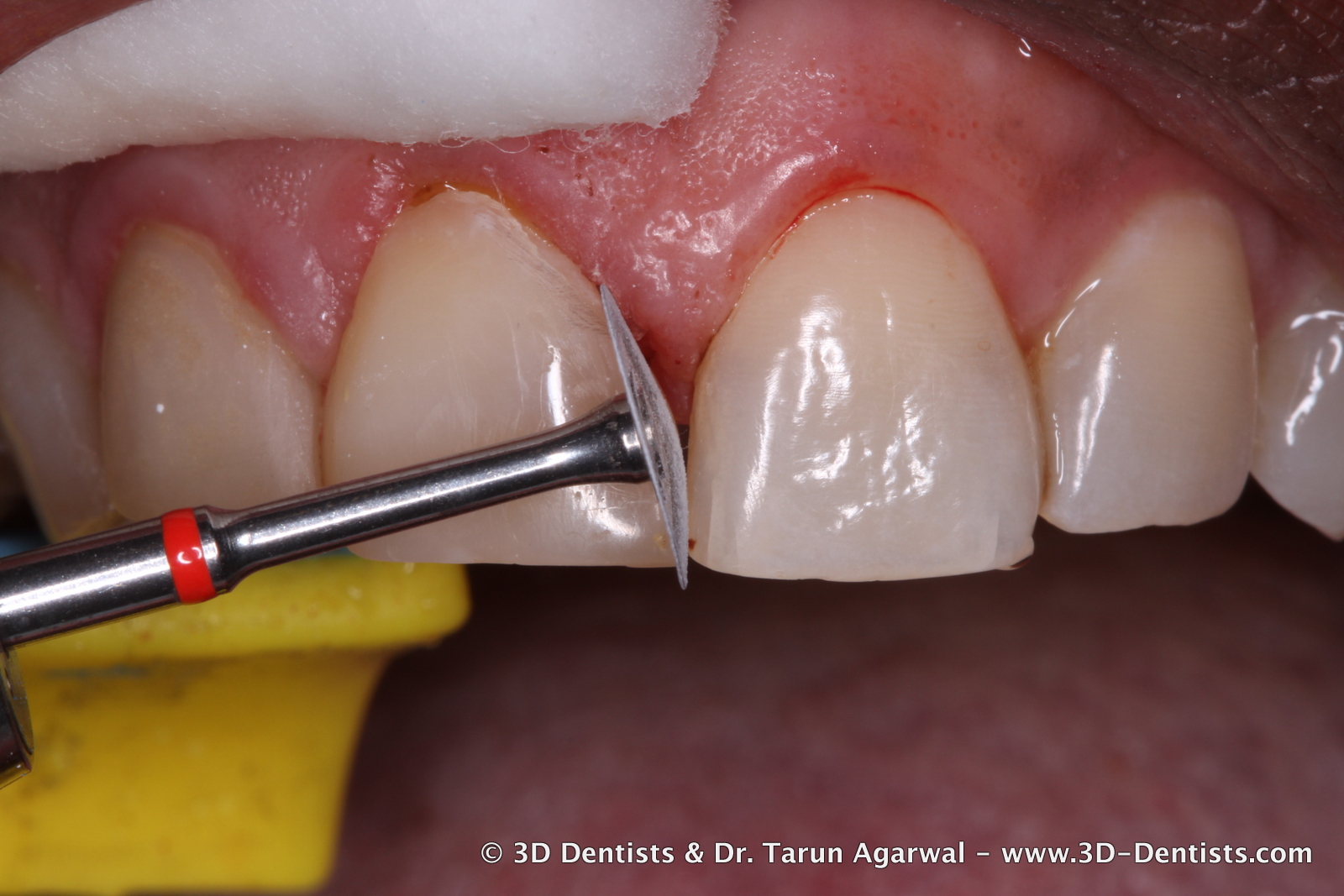
The first step was to use a diamond disc (Meisinger USA) in a straight handpiece at 2000rpm to adjust the mesial line angle and to slowly and carefully adjust the overcontoured papillae area. In retrospect, I angled this too much – as you will see in the final pictures.
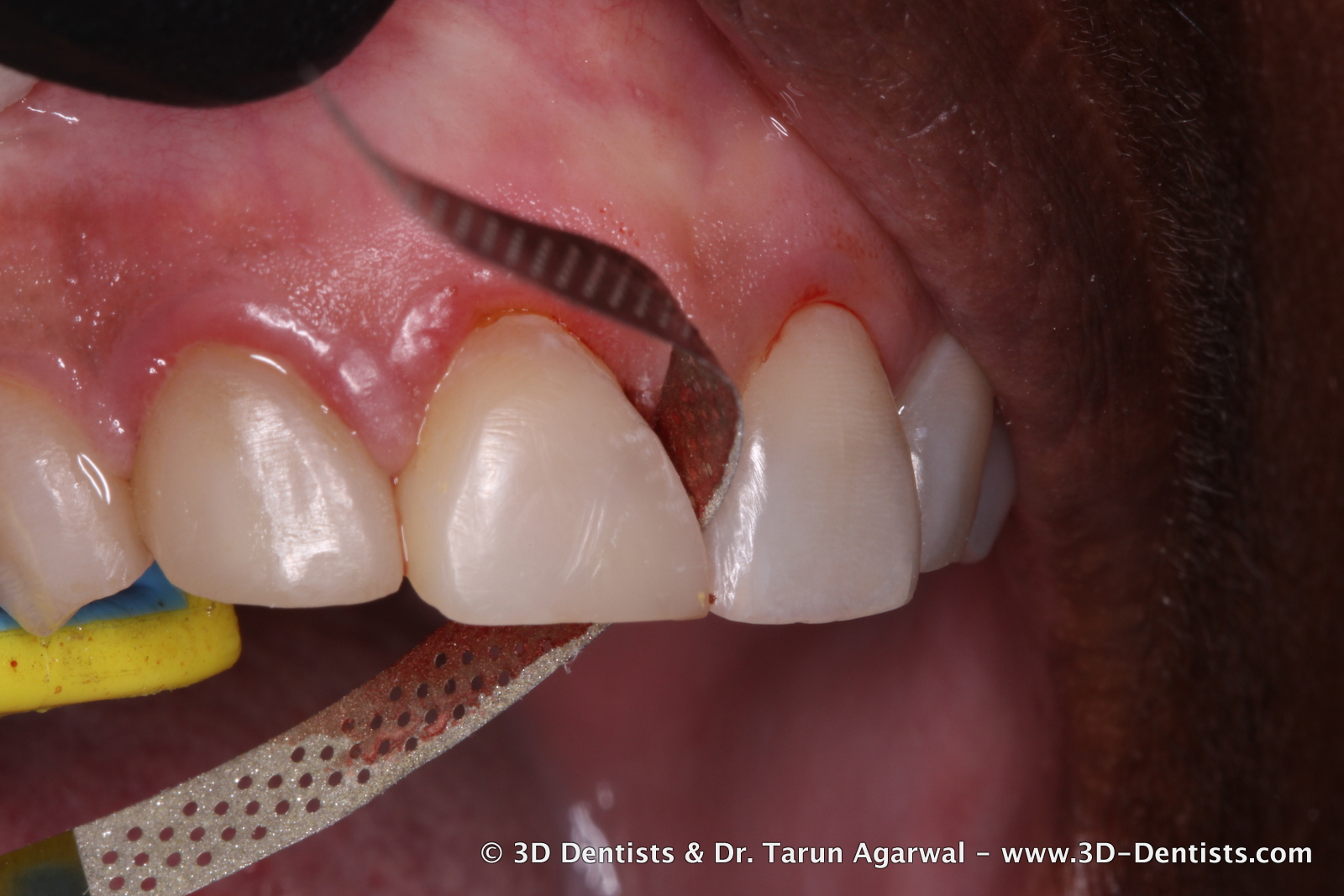
Then a metal sanding strip is used to continue contouring the papillae area. Care should be taken to minimize trauma to tissue and to not overcontour the line angle – which I also did here.
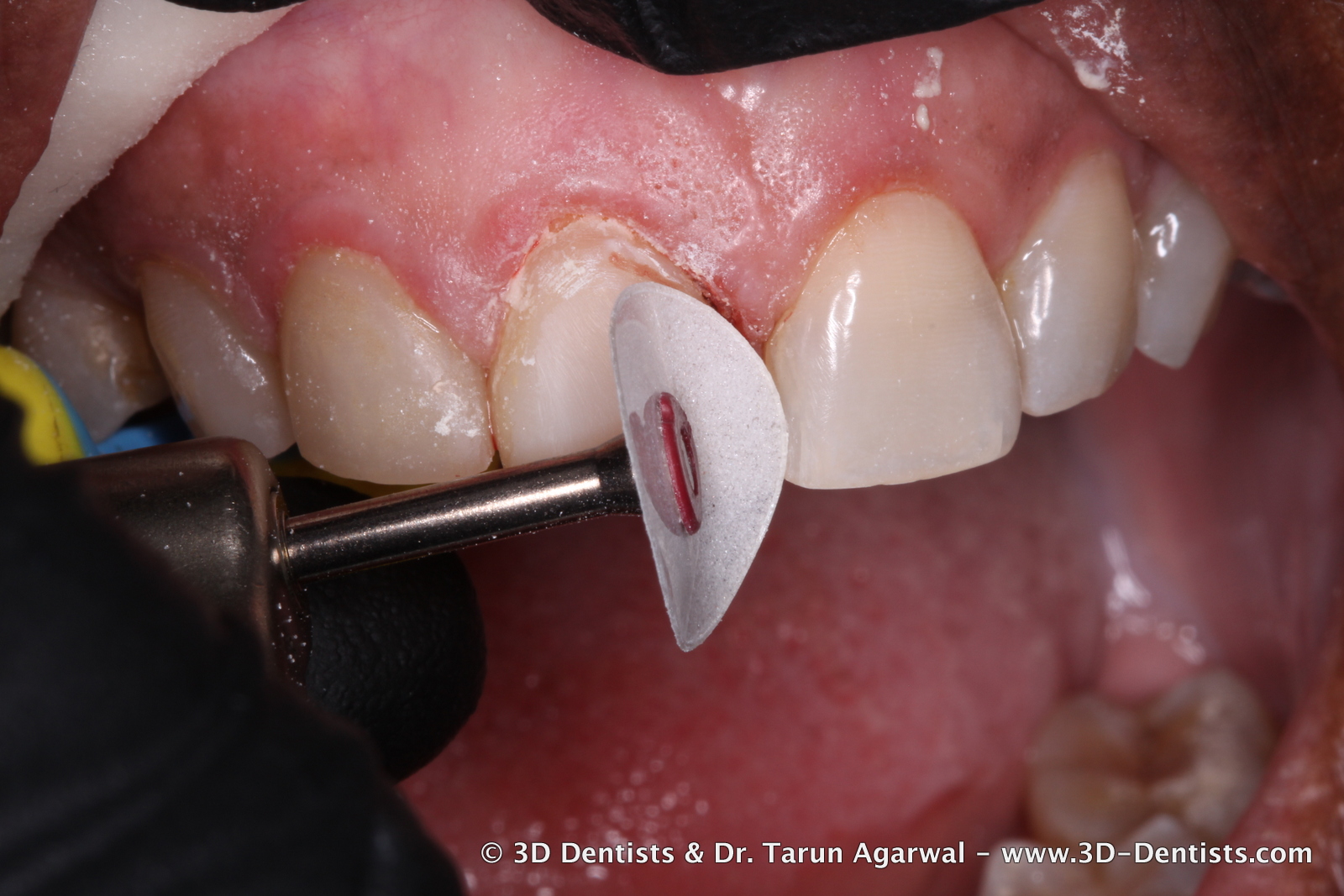
Next flexible sandpaper discs are used in a low speed at about 2000rpm to begin final shaping and polishing.
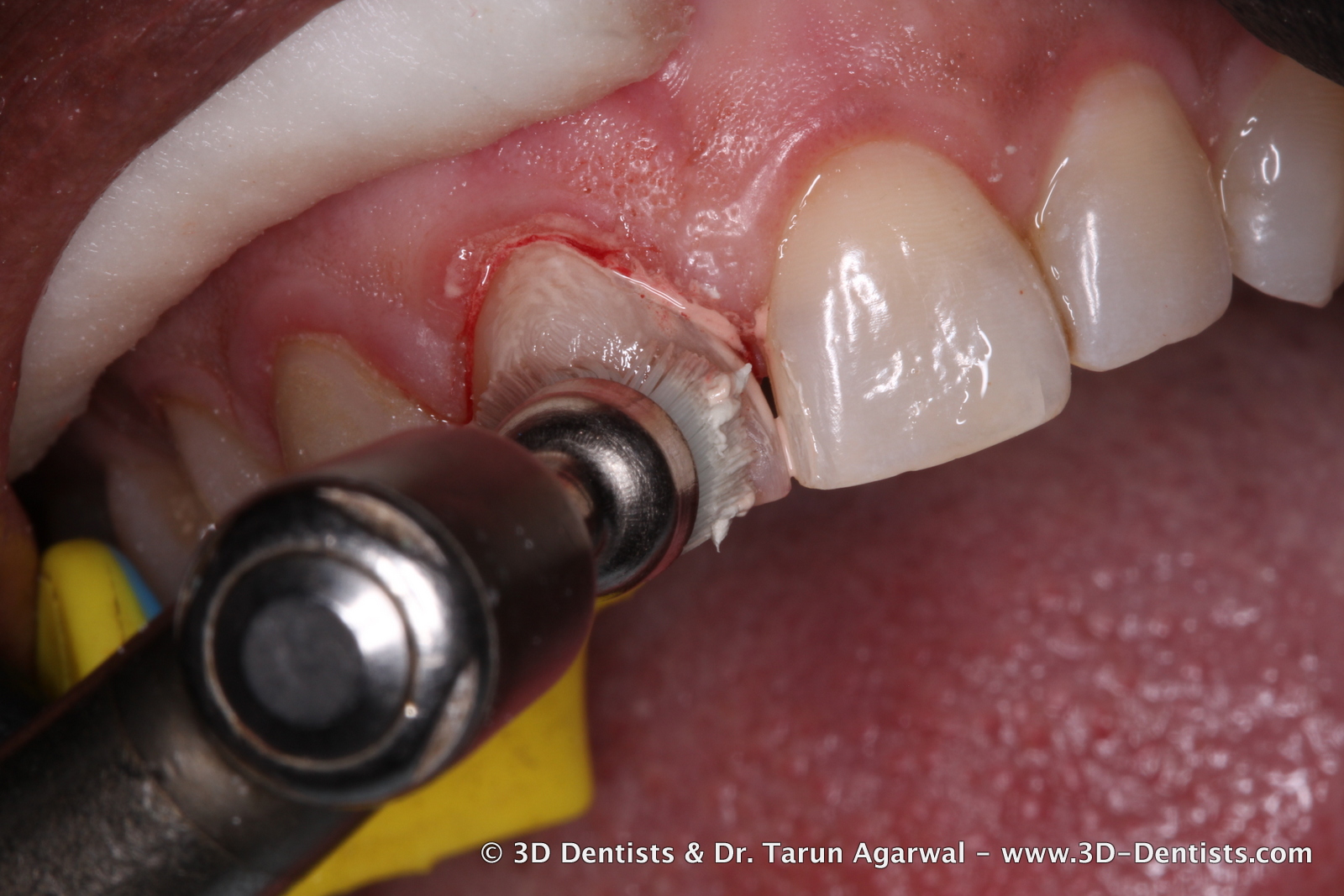
After contouring is completed diamond polishing paste is used with a bristle brush to achieve a nice smooth surface.
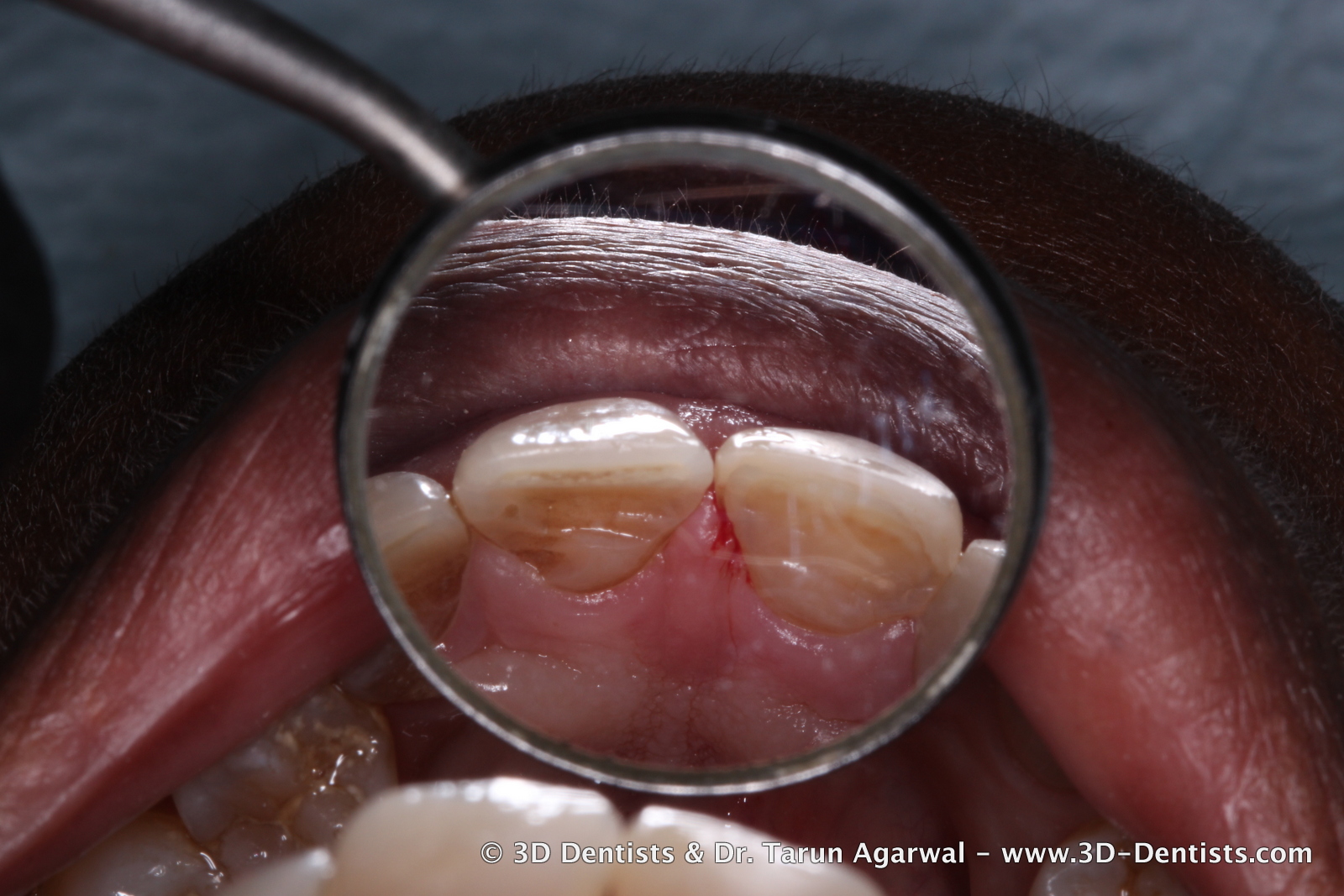
Here is a scratched mirror view showing the difference in the contact area contours.
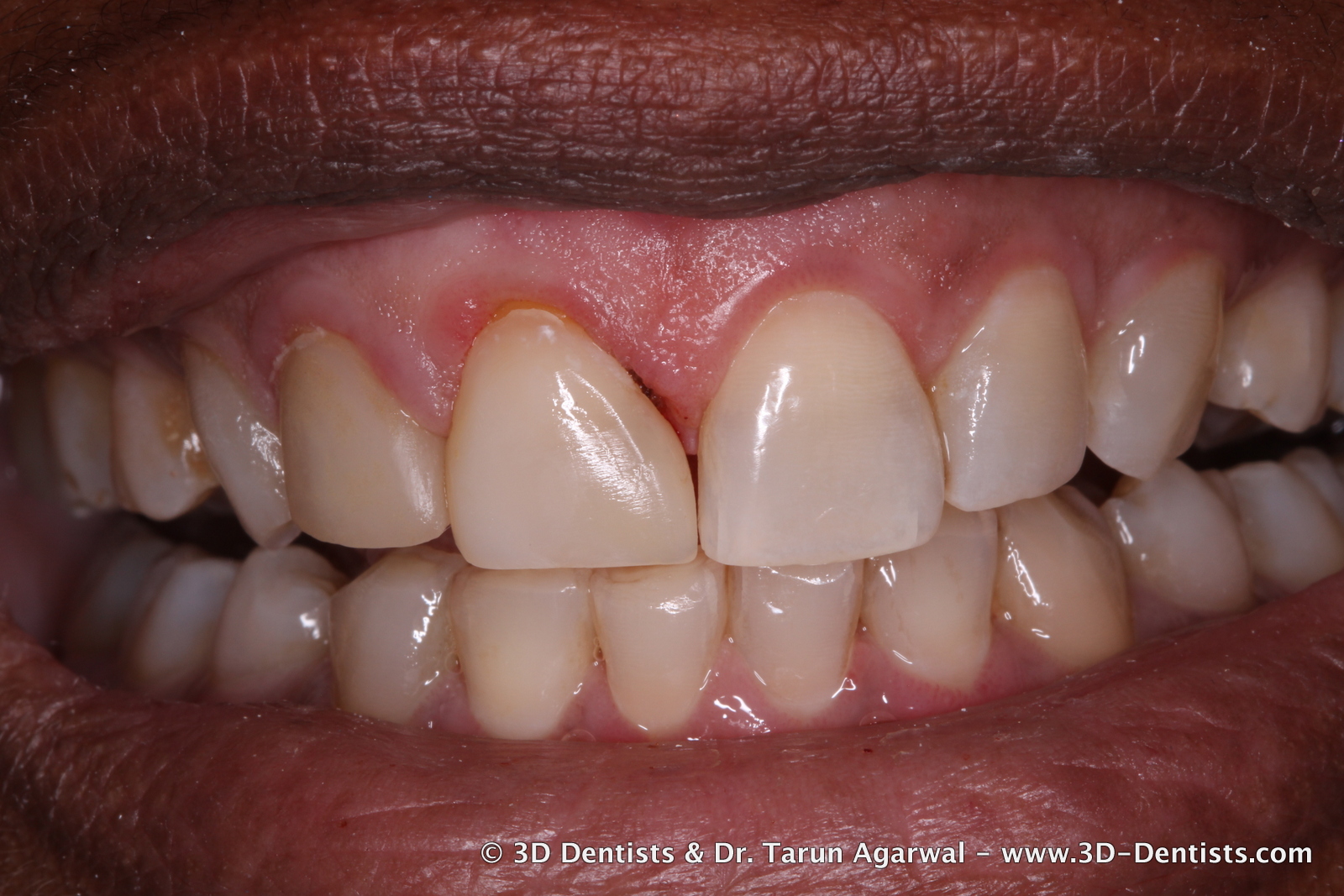
Here you can see the recontoured composite resin. Once again I’d like to point out that I overcontoured this. At this point it would be very plausible to come back and use a contoured sectional matrix band and establish proper matching contours. Luckily the patient was very pleased with this and didn’t ask for that!
Contours can make or break a case – direct or indirect. The same thing goes for your CEREC restorations. Start taking photography of your work and developing a critical eye so you can get better!

